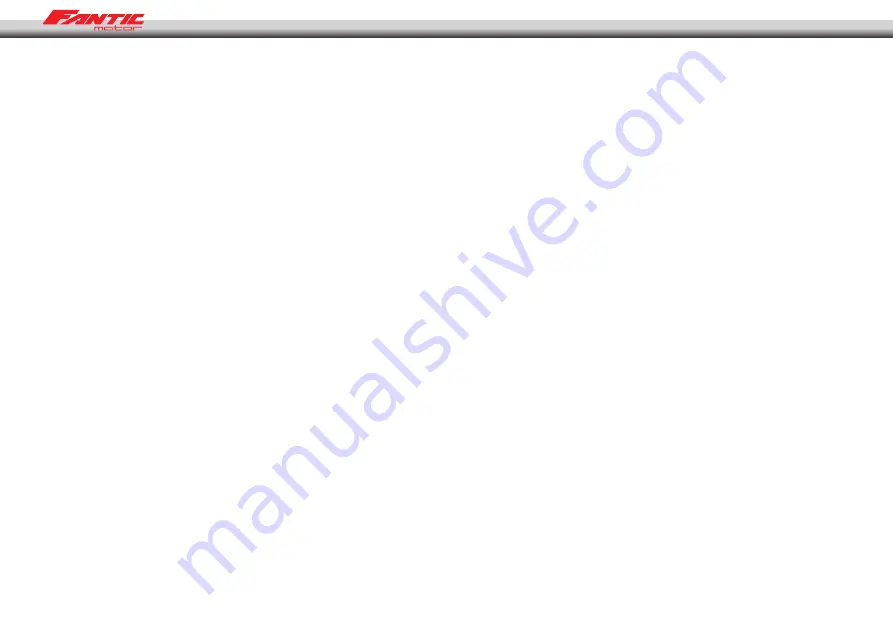
42
Does the motorcycle skids when driving down hill or when accelerating out of a curve?
Front fork is too soft.
1. Increase the compression or rebound damping.
2. Increase the oil level 10 mm.
3. Use a harder spring, or increase spring preload.
Does the front end tends to turn inward?
Front fork is too soft.
1. Increase the compression or rebound damping.
2. Increase the oil level 10 mm.
Does the front end slips when entering in a curve?
1. Decrease the compression or rebound damping.
2. Bleed air trapped in the fork.
3. Decrease the oil level 10-20 mm.
4. Use a softer spring.
Does the front fork fails to respond to small potholes while managing wide turns?
Front Fork is hard:
1. Decrease the compression or rebound damping.
2. Decrease the oil level 10 mm.
3. Use softer duty spring.
Does the rear end jumps when braking over potholes?
The shock absorber probably has too little rebound damping.
- Increase the rebound damping.
Does the rear tire lacks traction when coming out of corners?
- The shock absorber is too hard:
1. Decrease the rear shock absorber spring.
2. Decrease the compression damping.
3. Use a softer spring.
Does it land on the front wheel in high speed jumps?
(there may be a problem with the driver’s posture)
Rebound damping too soft or hard spring.
1. Increase the rebound damping.
2. Decrease the shock absorber spring preload.
3. Decrease the compression damping.
Does the suspension jounce stops at front and rear of the motorcycle in
high speed jumps?:
(If this occurs 1 or 2 times in the same lap of the race)
Front and rear suspension system are too soft:
1. Front: Increase the oil lever and / or use a harder spring.
2. Rear: Increase compression damping or use a harder spring.
NOTE
After any adjustment, check front and rear compatibility.
Adjustments that depend on the conditions of the jounce stops (rear
shock absorber).
- Suspension jounce stops at low speed, increase the spring preload to the
maximum setting.
- Jounce stops after 3 or 4 successive jumps, decrease the rebound dam-
ping.
Special care according to the terrain conditions.
1. In dry, dusty conditions (such as volcanic ash or fine powdery dust) special
care must be given to keep the air cleaner element clean.
2. Wet heavy clay or mud sticking to the tyres and other parts of the vehicle.
The mud can add significantly to the weight if the vehicle obstructing the
radiator and therefore reduce performance. Take care not to overheat the
engine. The same applies to deep sand.
3. In muddy or sandy conditions adjust the chain looser than in other con-
ditions as the chain and sprockets will pack with mud/sand and reduce
chain slack.
4. Check chain and pinion/sprocket wear frequently when riding in mud or
sand since wear is increase d in these conditions
5. In dusty conditions as the air cleaner collects dust, the engine runs richer.
















































